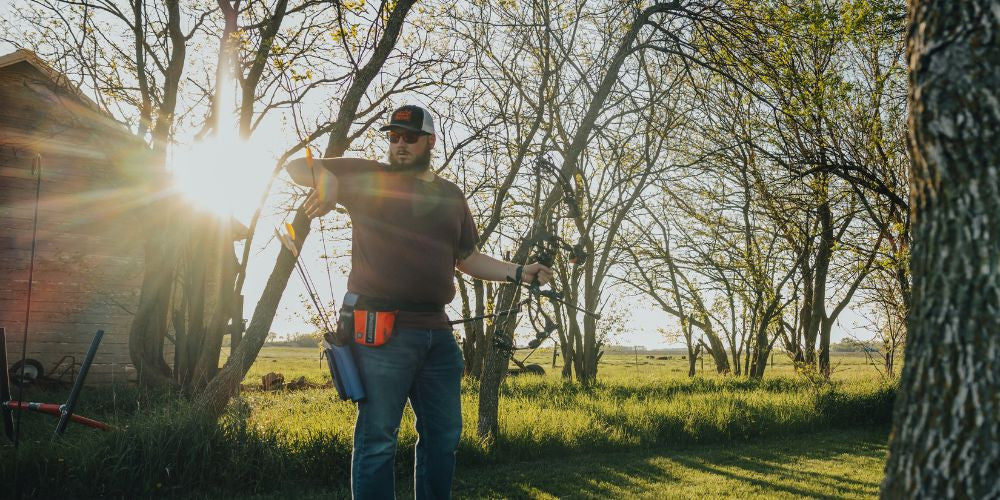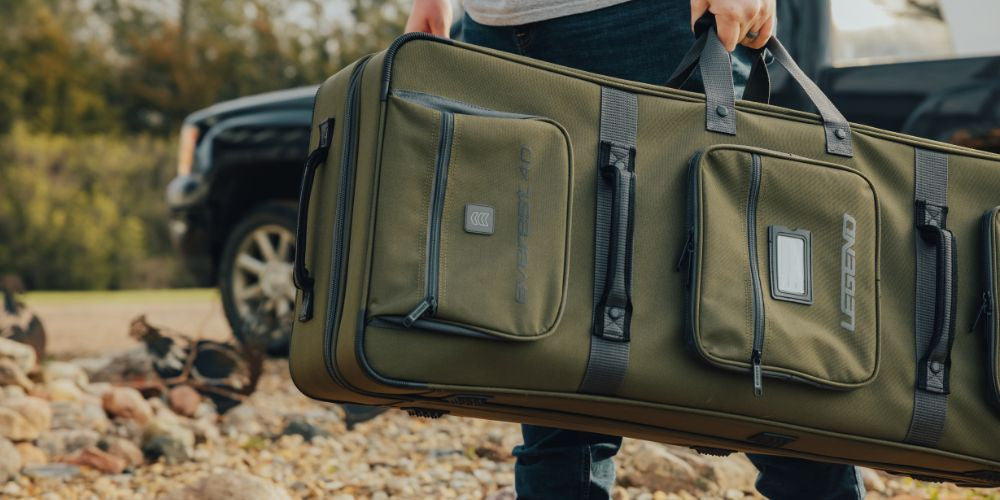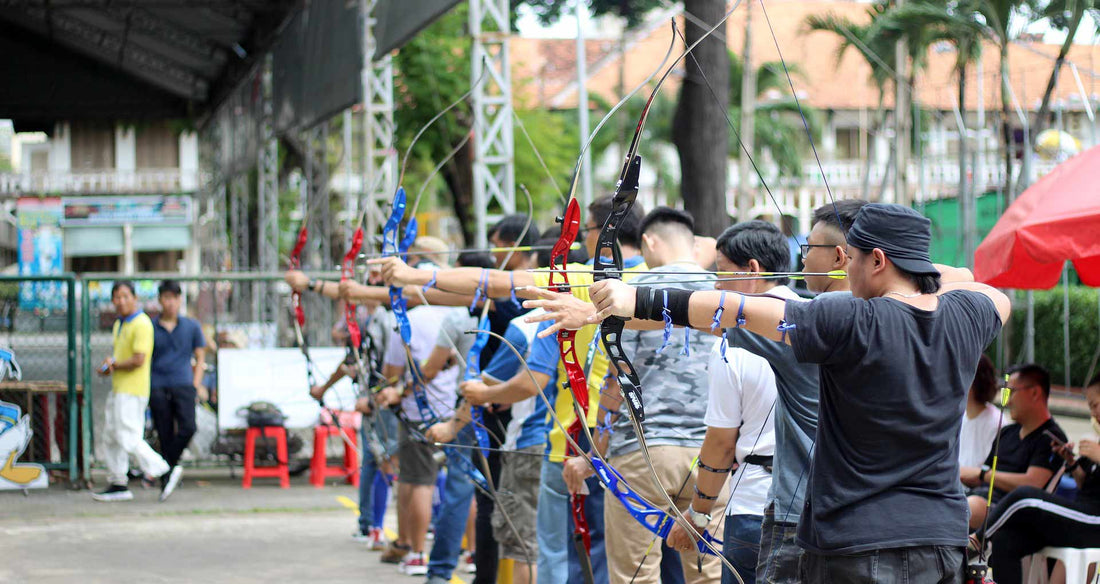As an archer, participating in archery tournaments is an excellent way to challenge yourself, hone your skills, and meet other archers. However, preparing for archery tournaments requires more than just showing up and shooting arrows. To ensure that you're ready to compete and perform your best, you need to bring specific gear and equipment with you. In this article, we'll discuss the seven essential things that you should never leave home without when preparing for archery tournaments.
The 7 Essentials You Should Bring to Archery Tournaments
Whether you're a seasoned archer or a newcomer to the sport, participating in an archery tournament can be an exciting and rewarding experience. However, to perform your best and enjoy the tournament, you need to be prepared with the right gear. When preparing for archery tournaments, never leave home without these 7 things:
Bow and Arrows
This is actually a no-brainer. Your bow and arrows are the heart and soul of your archery setup, and it's crucial to make sure they're properly maintained and tuned before the tournament. Check the string, cables, limbs, and cams for any signs of wear and tear, and make any necessary adjustments or repairs.
In addition to your main set of arrows, it's also a good idea to bring a few extra arrows to the tournament in case you lose or damage any during the event. Make sure the arrows are the same length and weight as the ones you normally shoot to ensure consistency.
Arrow Quiver

I know you’re rolling your eyes right now: “I’d never forget that!” Hang on, though. If your quiver isn’t stashed in your bow case, you could forget it, and that will make for a very long tournament day - or prevent you from competing at all if you forget the arrows and accessories that are usually in your quiver, too. Make absolutely certain you have a good plan for packing and bringing your quiver with you.
An arrow quiver is an essential accessory for holding your arrows and keeping them easily accessible during the tournament. There are several types of arrow quivers to choose from, including hip quivers, back quivers, and shoulder quivers.
The hip quiver is the most popular type of quiver among archers, as they attach to your belt and hold arrows on your hip for easy access. Back quivers are a good choice for traditional archers and can hold more arrows than hip quivers but are less convenient to access. Shoulder quivers are a lightweight and compact option, worn over one shoulder and holding arrows on your back.
Bow Case

A bow case is a protective carrying case for your bow that will keep it safe and secure during transport and storage. There are two main types of bow cases: soft cases and hard cases.
Soft cases are made of fabric and provide some padding and protection for your bow while still being lightweight and easy to carry. They're a good choice for archers who want a balance of protection and convenience. Hard cases, on the other hand, are made of plastic or metal and offer maximum protection for your bow. They're heavier and bulkier than soft cases but offer more peace of mind for archers who want to ensure their bow is completely protected during transport.
Allen Wrenches
This invaluable little tool set is used for everything from tightening down limb bolts on bows to adjusting the shelf on your finger tab. Allen wrenches are a type of hex key that are used to adjust and tighten the various components on your bow and accessories. When something loosens in competition, and you need to lock it down quickly, you’ll wish you had these wrenches. There are many different types of Allen wrenches available, including L-shaped wrenches, T-shaped wrenches, and fold-up wrenches. Do yourself a favor and order them as a single set with multiple wrenches rather than three or four individual tools that can easily be lost.
When choosing Allen wrenches for your archery kit, make sure to select the type that's most comfortable and convenient for you to use. It's also important to bring a set of Allen wrenches with multiple sizes to ensure you have the right tool for each component on your bow and accessories.
Arrow Puller and Lube
See above, under “terrible things to do to your arrows.” Seriously, yanking your arrows out of a target, even with two hands, is less than ideal without an arrow puller. Not only will your hands become uncomfortable, but you can do major damage to your arrows - and hurt your shoulder or back by pulling improperly. Save yourself some pain and frustration, and remember to pack your arrow puller.
An arrow puller is a rubber tool that makes it easier to remove arrows from a target without damaging the arrows or the target. Make sure the puller fits comfortably in your hand and has a good grip to ensure you can remove arrows quickly and efficiently.
Ever tried to remove your arrow from a recently re-cored target, only to have your arrow dangerously bend in the process? Make your life easier (and prolong the life of your arrows) by investing in a good arrow lubricant, sold inexpensively at archery stores everywhere.
Arrow lube is a silicone spray that helps arrows slide out of the target more easily. Apply the lube sparingly and wipe off any excess to ensure your arrows stay clean and free of debris. Arrow lube can also help prolong the life of your arrows by reducing wear and tear on the shafts.
Bow Sight

A bow sight is a device that helps you aim your bow more accurately by providing a visual reference for where your arrow will hit the target. There are many different types of bow sights available, including fixed pin sights, adjustable pin sights, and single pin sights.
When choosing a bow sight for your archery setup, consider your shooting style, the type of tournament you'll be participating in, and your budget. Make sure to also practice with your bow sight before the tournament to ensure you're comfortable and familiar with how it works.
Release Aid
A release aid is a device that helps you release the bowstring more consistently and smoothly than using your fingers alone. It's especially useful for archers who are just starting out, as it can help you avoid common mistakes like jerking or flinching when you release the arrow. There are many different types of release aids available, including wrist strap releases, handheld releases, and thumb trigger releases.
When choosing a release aid for your archery setup, consider your personal preferences and shooting style. Practice with your chosen release aid before the tournament to ensure you're comfortable and familiar with how it works.
Archery Tournaments: Other Accessories to Consider
In addition to the 7 essential items listed above, there are a few other accessories you may want to consider bringing to your archery tournament:
- Armguard

An armguard is a piece of protective equipment worn on the forearm to prevent injury from the bowstring during shooting. It can also prevent loose clothing or jewelry from getting caught in the bowstring and interfering with the shot. Armguards can be made of various materials, such as leather or synthetic materials, and come in different sizes to fit different arm lengths.
- Finger Tabs or Gloves
Finger tabs or gloves protect the fingers of the hand that pulls the bowstring from getting pinched or cut by the bowstring. They can also provide a consistent release point, improving accuracy and consistency in shooting. Finger tabs are typically made of leather or synthetic materials and come in various sizes and shapes to fit different finger lengths and preferences. Gloves are also available in different materials and sizes.
- Stabilizer

A stabilizer is a weight that attaches to the bow to help balance it during shooting. It can help reduce bow torque and improve accuracy by dampening vibrations and providing a smoother shot. It can also help balance your bow in windy conditions when participating in outdoor competitions. Stabilizers come in different lengths, weights, and materials, and the choice of stabilizer can depend on the archer's preference and shooting style.
- Bowstring Repair Kit
Bowstrings break. More specifically: servings unravel, nocking points loosen, and it can affect everything from nock height to your ability to shoot. The ultimate bowstring repair kit should include a spare string (for recurve bows), dental floss for nocking point repair, spare nock sets and pliers if you use the brass kind, extra loop material (for compound bows), spare serving thread with a serving tool, and a lighter.
How to Prepare for Archery Tournaments
Here are some steps to help you prepare for archery tournaments:
Get Organized
Start by finding out the date, time, and location of the tournament. This information will help you plan your travel and make sure you arrive early. You can usually find this information on the tournament's website or by contacting the organizers.
Next, create a checklist of all the equipment you will need for the tournament. This may include your bow and arrows, arrow quiver, bow case, Allen wrenches, arrow puller and lube, bow sight, release aid, and any other accessories you may need. This checklist will help ensure that you have everything you need on the day of the event.
Practice, Practice, Practice
The best way to prepare for an archery tournament is to practice regularly. Make sure you have plenty of time to practice scoring before the tournament and focus on improving your form, technique, and accuracy.
If possible, practice shooting at a range that simulates tournament conditions. For example, shoot at different distances, use a timer to limit your shooting time, and shoot with other archers to get used to shooting in a group setting. For example, you can practice shooting six arrows in four minutes. This will help you get used to the pressure and distractions of a tournament.
Check Your Equipment
Make sure your equipment is in good condition before the tournament. Check your bow and arrows for any damage or wear, and replace any worn-out parts. Make sure your bow is tuned properly and that your arrows are the correct length and weight for your bow.
Also, make sure you have all the necessary accessories, such as a bow case to protect your bow during transport, an arrow quiver to hold your arrows, Allen wrenches to adjust your bow, an arrow puller and lube to remove arrows from targets, a bow sight to help you aim more accurately, and a release aid to help you release the bowstring more consistently and smoothly.
Basic Archery Tournament Rules
Knowing the basic rules of archery tournaments is essential for any archer who wants to participate. Here are some of the key rules to be aware of:
- Scoring
Scoring in archery competition is based on the number of points earned for hitting the target. Targets are usually marked with scoring rings, and the closer the arrow lands to the center of the target, the higher the score. In most tournaments, archers shoot at targets that are 18 meters away (indoor) or 50 meters away (outdoor tournament). The total score is calculated by adding up the points for all the arrows shot.
- Time Limits
Most tournaments have time limits for each round of shooting. These limits vary depending on the tournament and the round being shot but typically range from 2-4 minutes per round. Archers must shoot all their arrows within the time limit, and penalties may be imposed for exceeding the limit.
- Equipment Rules
Archery tournaments have rules regarding the types of archery gear that can be used. For example, the bow and arrows must meet certain specifications, such as draw weight, arrow length, and diameter. In addition, some tournaments may have rules regarding the use of accessories such as stabilizers, sights, and release aids.
For recurve archers, the bow must have a maximum draw weight of 60 pounds, and the arrows must have a maximum diameter of 9.3mm. Archers are also allowed to use a stabilizer and a sight but cannot use a release aid.
While for compound archers, the bow must have a maximum draw weight of 60 pounds at full draw, and the arrows must have a maximum diameter of 9.3mm. Archers are allowed to use a release aid, as well as a sight and a stabilizer.
- Safety
Safety is a top priority in archery competition. Archers must follow all safety rules, such as keeping their arrows pointed downrange at all times and not crossing the shooting line until all arrows have been shot.
In archery tournaments, there is a designated "shooting line" that marks the area where archers must stand to shoot their arrows. Archers are not allowed to cross this line until all the arrows have been shot and all competitors have returned to the line.
In addition, protective gear such as armguards and finger tabs are required to prevent injury.
Conclusion
Archery tournaments require preparation and organization to succeed. Most archers - both beginner and experienced archers know there are lots of things you can forget that will cause frustration during a tournament, but if you start packing the day before and use a packing list, you’ll be far less likely to run into this problem. Also, packing the day before and knowing you have what you need sets you up for success, allowing you to get the good night’s sleep you need for a great day of archery. Remember to check off this list before heading to your next archery tournament, and enjoy the competition!
 cust@legendarchery.com
cust@legendarchery.com 302 503 5767
302 503 5767 Sauk Village IL 60411
Sauk Village IL 60411


